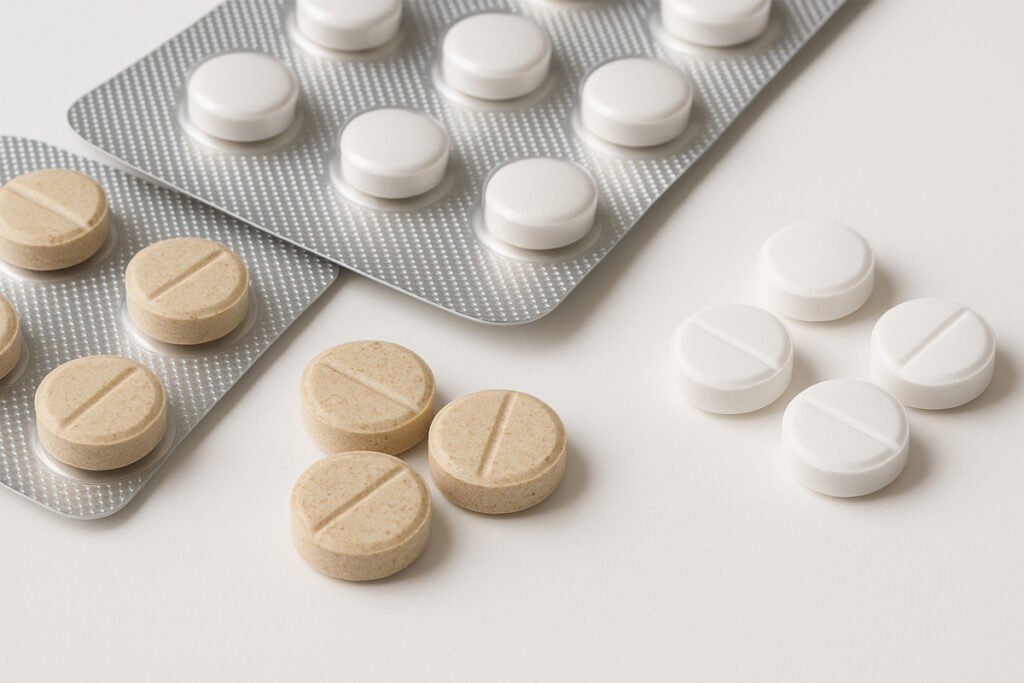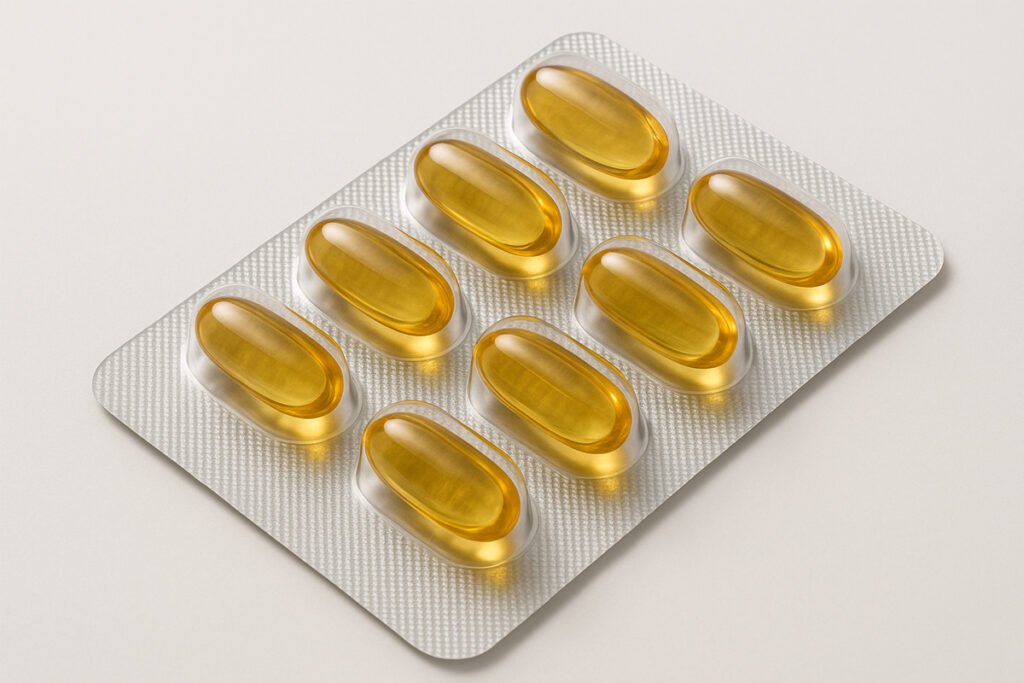What Are Effervescent Tablets?
Effervescent tablets are solid oral dosage forms designed to dissolve in water before ingestion. They contain acid-base components—typically citric acid and sodium bicarbonate—which react upon contact with water to release carbon dioxide gas. This reaction results in a fizzy, palatable solution that delivers active ingredients in liquid form.
Technical Composition:
- Acid-Base Pair: For effervescence (citric acid + sodium bicarbonate)
- Active Ingredients: Vitamins, minerals, or drugs
- Binders & Fillers: Mannitol, sorbitol, or maltodextrin for tablet stability
- Flavors & Sweeteners: Enhance taste and masking bitter actives
- Colorants (optional): Improve appearance but may be omitted in clean-label formulations

Unlike conventional tablets or capsules, effervescent tablets bypass the need to disintegrate in the stomach, which improves bioavailability—especially for nutrients that degrade in acidic conditions.
Why Choose Effervescent Tablets?
✅ Enhanced Absorption
Since the active ingredients are dissolved in water before ingestion, they’re absorbed faster in the gastrointestinal tract. This is particularly beneficial for water-soluble vitamins like C and B-complex, or drugs requiring rapid onset.
✅ Better Taste and User Experience
Many users dislike swallowing pills. Effervescent tablets are ideal for children, seniors, and patients with dysphagia. Their flavored, beverage-like format improves patient compliance.
✅ Precision Dosing
Each effervescent tablet delivers a pre-measured, consistent dose. This eliminates the variability often associated with powders or liquids that require scooping or measuring.
✅ Large Dose Capacity
Unlike capsules or small tablets, effervescent tablets can accommodate higher quantities of active ingredients—up to several grams—without affecting tolerability.
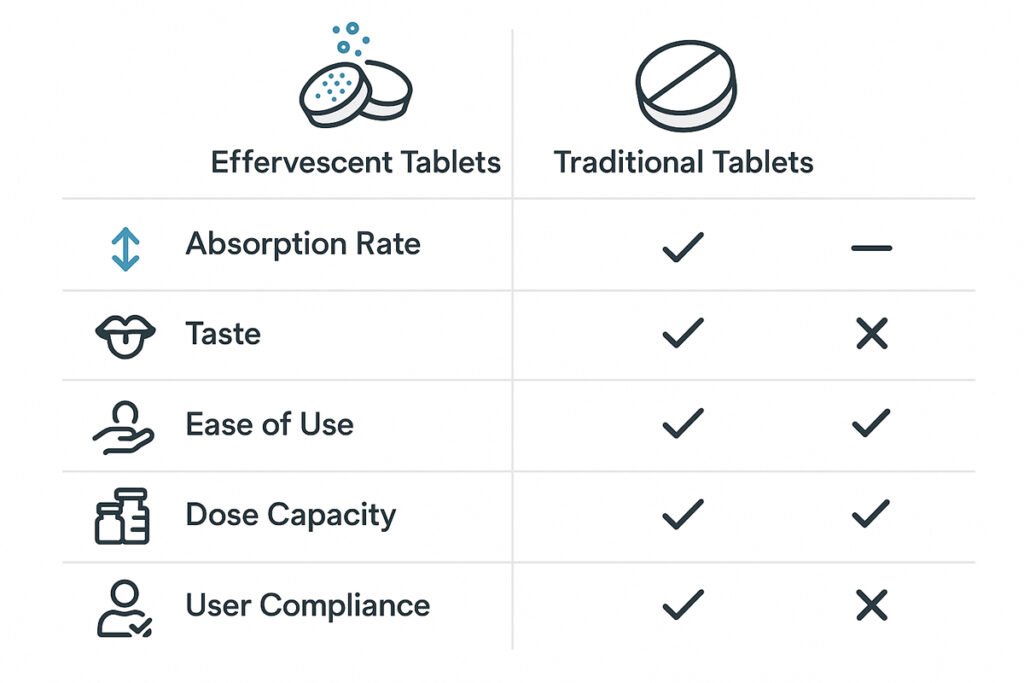
Common Use Cases and Formulations
🟡 Nutraceuticals
Effervescent tablets are widely used in the health supplement industry for:
- Vitamin C (immunity support)
- Multivitamin blends
- Calcium + Vitamin D3 (bone health)
- Magnesium (muscle relaxation)
- Electrolyte hydration mixes
🔵 Pharmaceuticals
In pharma applications, they’re used for:
- Analgesics (e.g., aspirin, acetaminophen)
- Antacids
- Cold & flu remedies
- Cough suppressants
🟢 Functional Beverages
Effervescent delivery is also applied to:
- Energy drinks with caffeine and B-vitamins
- Herbal supplements like ginseng or chamomile
- Sleep aids (e.g., melatonin, magnesium + lemon balm)
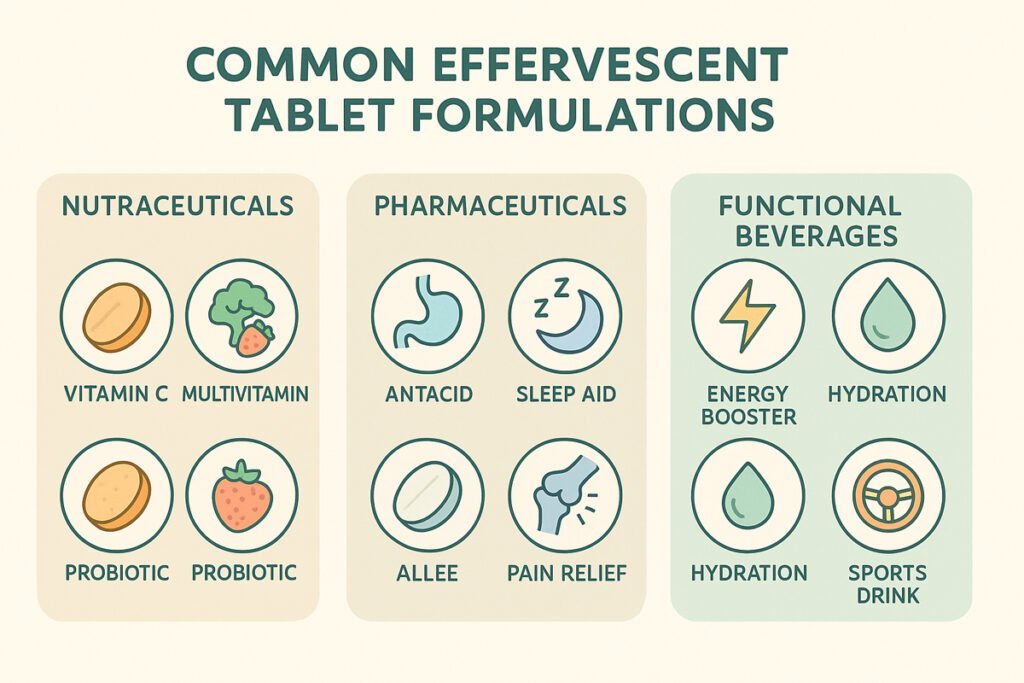
Key Considerations When Sourcing Effervescent Tablets
Choosing the right manufacturer or supplier involves more than just cost. Here are some core factors to evaluate:
Moisture Sensitivity
Effervescent tablets are hygroscopic and highly sensitive to moisture. Ensure packaging uses aluminum tubes with desiccants or moisture-resistant sachets.
Flavor Masking Expertise
Many active ingredients have a bitter or metallic taste. The ability to mask these through flavor systems is essential to end-user satisfaction.
Testing and Stability
Manufacturers must conduct stability testing to ensure the tablet retains its effervescent action and ingredient potency over shelf life.
Regulatory Compliance
Depending on your target market (e.g., USA, EU, Middle East), check that the manufacturing facility complies with GMP, ISO, and relevant local standards.
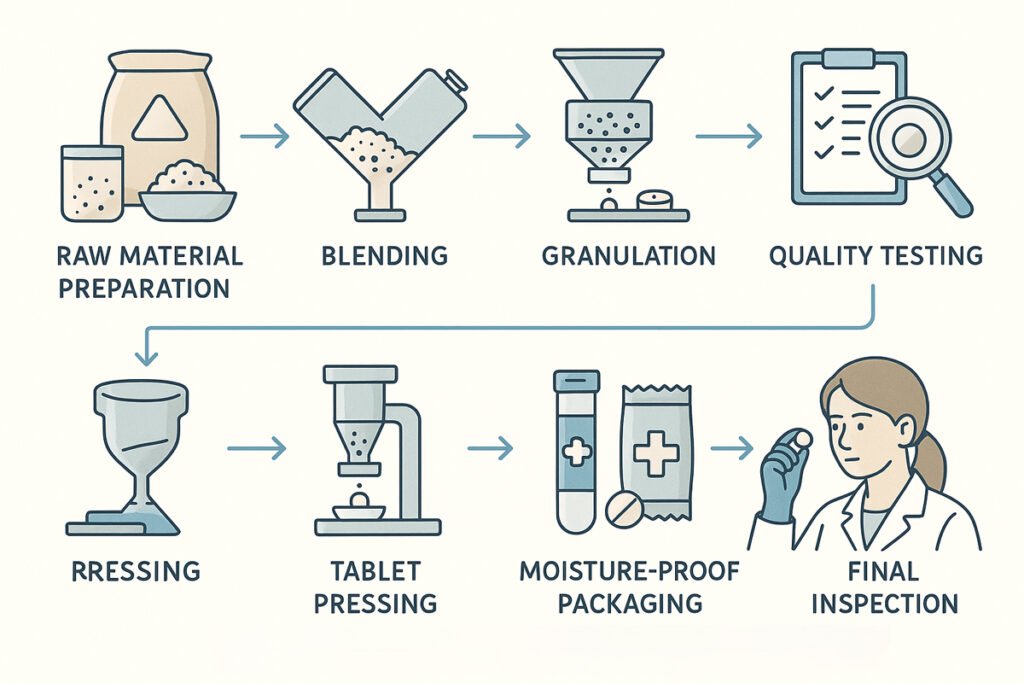
Welcome to contact us to get a free quote!
Frequently Asked Questions
Q1: Are effervescent tablets suitable for all active ingredients?
A: Not all actives are stable in aqueous solutions or compatible with acid-base reactions. A feasibility assessment during formulation is recommended.
Q2: Can effervescent tablets be sugar-free?
A: Yes. Sugar-free options using sucralose, stevia, or erythritol are increasingly popular in health-focused markets.
Q3: What’s the typical shelf life?
A: With proper moisture-resistant packaging, most effervescent tablets have a shelf life of 18–36 months.
Summary
Effervescent tablets are an increasingly preferred dosage form across health, wellness, and medical sectors due to their rapid action, pleasant format, and high absorption. Whether you’re looking to develop a new product or transition an existing one into this format, understanding the formulation, packaging, and regulatory considerations is essential. Proper manufacturing partnerships and product planning will lead to higher success in competitive global markets.

